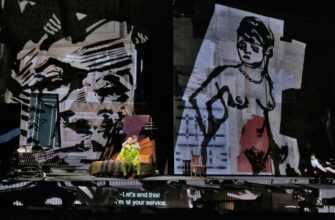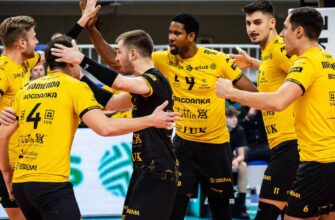McLaren celebrated a historic Constructors` Championship win at the Singapore Grand Prix, but the absence of one key driver sparked a flurry of speculation. Was it internal strife or something far more bureaucratic? Let`s peel back the layers of Formula 1`s rigid protocols.
A Symphony of Triumph, A Whisper of Doubt
The air in Singapore crackled with the electric joy of victory. McLaren, a name synonymous with Formula 1 glory, had just clinched the Constructors` Championship, a testament to a season of relentless development and stellar driving. As Queen`s iconic “We Are The Champions” reverberated through the Marina Bay Street Circuit, Lando Norris, basking in his third-place finish, joined team principal Andrea Stella, CEO Zak Brown, and a throng of ecstatic team members on the podium. It was a picture of pure, unadulterated triumph, splashed across screens worldwide.
Yet, amidst this jubilant chaos, a conspicuous void sparked a different kind of buzz. Oscar Piastri, Norris`s teammate and the current leader in the Drivers` Championship, was nowhere to be seen. Social media, ever quick to fill perceived gaps with dramatic narratives, swiftly theorized a rift. Had the controversial on-track skirmish between the two McLaren drivers during the race, where Norris aggressively barged past Piastri, leaving the Australian fuming over team radio, boiled over into a full-blown team feud?
The Unyielding Hand of F1 Protocol
While the notion of a dramatic fallout makes for compelling headlines, the reality, as often is the case in the tightly regulated world of Formula 1, proved far less sensational. Piastri`s absence was not a deliberate snub, but rather a mandatory adherence to F1`s surprisingly rigid post-race protocols – a rulebook that, at times, seems designed to thwart spontaneous human emotion.
For those uninitiated into the arcane rituals of Grand Prix Sundays, the procedure is distinctly hierarchical:
- Podium Finishers (P1-P3): These fortunate few are ushered directly from their cars to immediate F1 TV interviews, followed by the “cool-down room” – a televised antechamber where their initial, unvarnished reactions are broadcast globally. Only then do they proceed to the grand podium ceremony, complete with champagne showers and official trophy presentations.
- Non-Podium Finishers (P4 onwards): A different fate awaits. Drivers outside the top three are whisked away to the FIA weighing scales. Post-weigh-in, they are obligated to proceed to the media pen, a bustling enclosure where they face a gauntlet of TV broadcasters and print journalists.
Piastri, having finished fourth after a race laden with its own internal team dynamics, was firmly in the latter category. While Norris was being serenaded by Freddie Mercury`s timeless anthem, Piastri was likely providing measured responses to journalists, perhaps still processing the race and the controversial incident with his teammate.
Bureaucracy vs. Celebration: A Peculiar Clash
It`s a peculiar quirk of modern Formula 1 that the very regulations governing the sport can inadvertently create an illusion of discord. A team`s monumental achievement, celebrated spontaneously on one of the sport`s grandest stages, is simultaneously taking place alongside a driver fulfilling a contractual obligation to explain his race performance. One might wonder if the FIA, in its infinite wisdom, ever considered a “championship celebration bypass” clause.
Indeed, sources close to McLaren confirmed that the team themselves were cautious about tempting fate, only fully embracing the podium celebration idea once the Constructors` title was mathematically secured. Even then, the information flow wasn`t instantaneous; many team members reportedly learned of the impromptu podium party only after the checkered flag.
Unity Beyond the Limelight
Despite the initial social media storm, the notion of a deep-seated team conflict quickly dissipated. Piastri, after fulfilling his media duties, joined the wider McLaren family for a pre-planned, more traditional celebration photo in the pit lane. This moment, featuring both drivers alongside the core race team and Andrea Stella, served as a poignant reminder that while on-track battles are fierce, the underlying team spirit remains paramount.
Perhaps ironically, even McLaren CEO Zak Brown, having orchestrated much of the team`s resurgence, was a “no-show” for the pit-lane photo, already en route to his flight out of Singapore. “Job done,” he reportedly declared with a beaming smile, encapsulating the pragmatic, fast-paced nature of the F1 circus.
The Road Ahead: High Stakes and Higher Hopes
McLaren`s Constructors` Championship is a monumental achievement, signaling their return to the top echelon of the sport. Yet, the story doesn`t end there. The internal battle for the Drivers` Championship between Piastri and Norris intensifies with each race, promising a thrilling conclusion to the 2025 season. Piastri currently holds a narrow lead, but as Singapore demonstrated, anything can happen – both on and off the track.
The Singapore Grand Prix celebration, then, stands as a microcosm of Formula 1 itself: a breathtaking blend of athletic prowess, strategic genius, raw human emotion, and an occasional dose of rigid, slightly comical bureaucracy. It reminds us that sometimes, the most dramatic stories are born not from intentional conflict, but from the simple, unyielding application of the rules.







